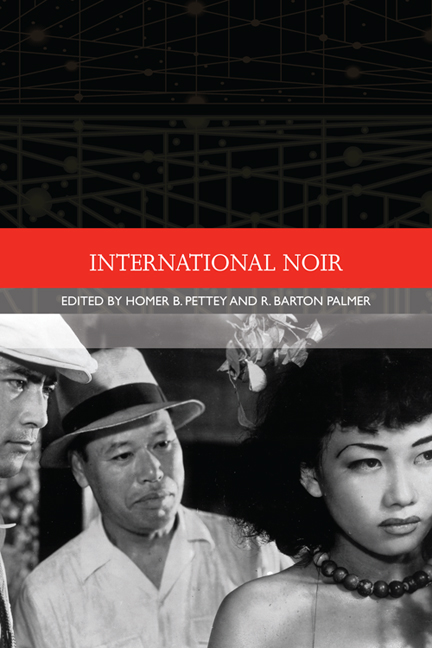Book contents
- Frontmatter
- Contents
- List of Illustrations
- Acknowledgements
- Notes on the Contributors
- Traditions in World Cinema
- Introduction: The Noir Impulse
- 1 British Noir
- 2 French Noir 1947–79: From Grunge-noir to Noir-hilism
- 3 French Neo-noir: An Aesthetic for the Policier
- 4 Early Japanese Noir
- 5 The Gunman and the Gun: Japanese Film Noir since the Late 1950s
- 6 Darker than Dark: Film Noir in its Asian Contexts
- 7 Nordic Noir and Neo-noir: The Human Criminal
- 8 Indian Film Noir
- 9 The New Sincerity of Neo-noir
- 10 Post-noir: Getting Back to Business
- Selected Bibliography of International Film Noir
- Selected Filmography of International Film Noir
- Index
8 - Indian Film Noir
Published online by Cambridge University Press: 05 August 2016
- Frontmatter
- Contents
- List of Illustrations
- Acknowledgements
- Notes on the Contributors
- Traditions in World Cinema
- Introduction: The Noir Impulse
- 1 British Noir
- 2 French Noir 1947–79: From Grunge-noir to Noir-hilism
- 3 French Neo-noir: An Aesthetic for the Policier
- 4 Early Japanese Noir
- 5 The Gunman and the Gun: Japanese Film Noir since the Late 1950s
- 6 Darker than Dark: Film Noir in its Asian Contexts
- 7 Nordic Noir and Neo-noir: The Human Criminal
- 8 Indian Film Noir
- 9 The New Sincerity of Neo-noir
- 10 Post-noir: Getting Back to Business
- Selected Bibliography of International Film Noir
- Selected Filmography of International Film Noir
- Index
Summary
Has the Indian film industry – often identified as the world's largest – produced film noir? Pursuing an answer to this seemingly straightforward question may require, like the tangled plots of many noir films, tracing a forward path through a series of flashbacks and unexpected detours. Most claims for the existence of non-Hollywood film noir are relatively recent, reinforcing the fundamental historical circumstance succinctly emphasised by Tom Gunning: ‘Film noir may be the great achievement of film studies’. Indeed, any attempt to expand the international purview of film noir, once viewed as distinctly and exclusively American (despite recognisable European roots), cannot ignore the nagging reminder that film noir was discovered – if not wholly invented – by film critics rather than the Hollywood studio filmmakers making movies they and their initial audiences would have readily identified as thrillers, detective stories or mysteries, among other more familiar genre terms. As has been the case elsewhere, the designation or categorisation of a group of films as ‘Indian film noir’ is emphatically retroactive, a critical act of explicit historical reclassification that may ultimately be as misleading as illuminating. In fact, as Nikki J. Y. Lee and Julian Stringer have warned, the larger, now commonly invoked category of ‘Asian noir’ may be no more than a ‘dubiously unifying concept’, ‘a mere category of convenience behind which lurk a range of more stubbornly complex stories concerning the historically specific characteristics of multiple regional film industries’. If we belatedly locate examples of Indian film noir, we must also acknowledge the historical and cultural conditions that now allow us to do so, decades after the films we seek to make comprehensible through this category were made and enjoyed: in short, any responsible claim for the existence of Indian film noir must waver with critical uncertainty.
Nevertheless, while crime stories, as elsewhere, have been an unsurprisingly common component of Indian popular cinema, contemporary critics have, if only in passing, increasingly attributed a ‘darker’ aspect to a portion of India's vast corpus of films, thereby affiliating these recently retrieved examples with Hollywood and other commercial national cinemas, in effect constructing a comparative perspective that retrospectively ‘corrects’ the absence of popular Indian cinema from most historical accounts of world cinema until the 1990s. Now that popular Indian cinema has secured a place in this expanded history, perhaps, it appears, there once was Indian film noir too.
- Type
- Chapter
- Information
- International Noir , pp. 182 - 192Publisher: Edinburgh University PressPrint publication year: 2014



